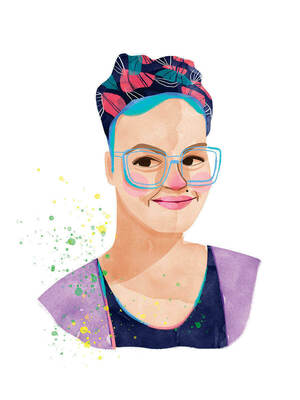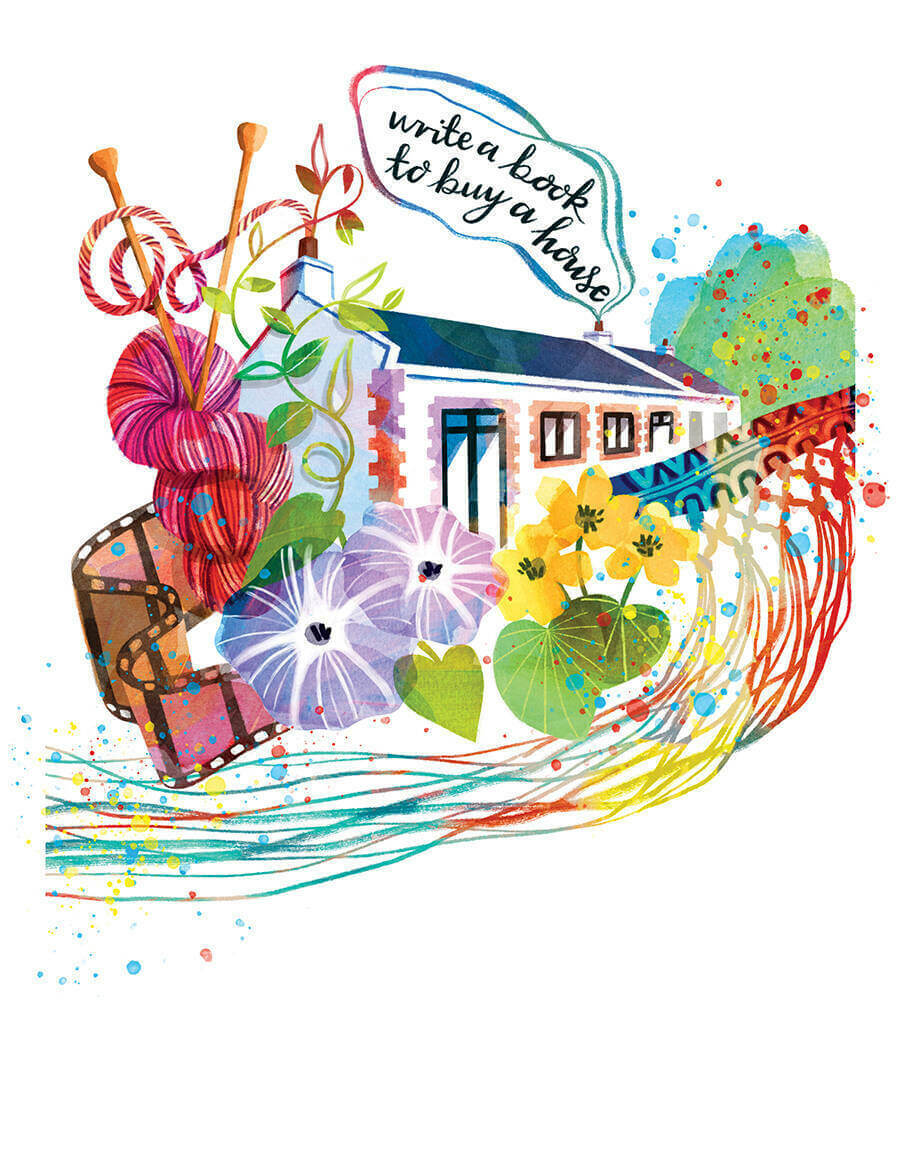
The year after I graduated, I published my first novel and eloped to Ireland with a handsome horse trainer. I write fairy tale retellings, and I thought I’d found my happily-ever-after.
Then, at 29, I found myself a new mother in a harmful marriage, estranged from my birth family. I knew I had to save my baby from a terrifying situation — and that knowledge made me see that I deserved saving, too.
So I ran.
First I ran to a domestic violence refuge, then to a hotel, to a friend’s spare room, and finally to a tiny country bungalow from which I worked multiple jobs and barely made rent each month. I was a New York Times bestselling author, but I’d used up all my savings leaving my husband, and book money no longer kept a roof over our heads. I worked desperately hard just to survive.
Over the next few months, I stitched together a new life for myself and my son. Some ends met while others frayed: My friends crowdfunded my rent and groceries one month. I launched my fourth book and met deadlines for my fifth, all while teaching at the local university, writing and editing for an American magazine and working other jobs. I grappled with the howling grief of my divorce and the challenges of parenting a 1-year-old alone. I had always been a fantasy writer, but now I had to look for another once-upon-a-time since my happily-ever-after had vanished.
Our brief brush with homelessness had given my dreams a new form: a home of my own. I spent many sleepless, anxious nights scrolling through real-estate listings for homes I couldn’t afford. Home ownership became a fixation, but it felt purely fantastical in my position. I had to borrow money from my son’s godmother and beg for freelance work from friends just to cover utilities.
That dream turned into a plan one day when my friend Joan and I made our annual pilgrimage to the Knitting and Stitching Show in Dublin. I’d spent much of our train ride from Galway scouring those unattainable real-estate listings and sighing dreamily.
Eminently practical Joan rolled her eyes at my flimsy imaginings. “If you want to buy a house, there are ways to make it happen,” she said. “You’re a writer. Why not write about a house, and sell the book to buy it? You know, Under the Tuscan Sun and all that?”
It’s true: I’ve published five novels and many essays, and I teach writing at the National University of Ireland and on retreats at Kylemore Abbey. I felt my heart flicker.
I could write a book to buy a house.
“Joan,” I cried, “that’s just crazy enough to work!”
I felt more energized that day than I had in months of sleepless, toddler-interrupted nights and endless days working tedious jobs. On the train home, I wasn’t looking at real-estate listings. I was knitting, and I was writing.
I was still faced with the drab, exhausting reality of scraping by each day in our tiny bungalow, too tired to give my work the attention I knew it deserved. I couldn’t see myself as the heroine of my story anymore; I was just a girl stuck in a tower, a coffin, a wolf’s belly. As unable to change my own fate as are the passive princesses I’ve always tried to give more agency in my writing.
I think that’s why my dream never died, even though dreaming was all I could do. Even when you’re sleeping in a glass coffin, your mouth full of poison fed to you by someone you trusted, your dreams remain your own. Maybe those princesses knew more than I gave them credit for knowing.
Like my child, my dream was growing every day. I didn’t want a home just for myself and my son, I realized, but a place where I could offer rest and safety to other single mothers. I’d joined the survivors’ group at my local shelter, and those women inspired me and restored my lost faith in myself. A childcare-inclusive residency for single mothers became my dream, but this vision also made it harder to find a suitable property.

One full-moon night in March 2020 — just before the COVID-19 lockdown hit Ireland — I couldn’t sleep, as if a voice was whispering me awake. I turned to my insomniac’s masochistic habit and pulled up a real-estate website on my phone. I scrolled through converted pubs, damp farms and plenty of “Tiger Houses” — half-completed homes abandoned when Ireland’s “Celtic Tiger” economic bubble burst.
And then I saw the Old Knitting Factory, and my heart started beating faster. The name called to me first: I have always loved to knit, and my dream had been born at the Dublin knitting show.
The listing showed a long, white-and-yellow house nestled on the rugged, overgrown shore of a Connemara lake. Built in 1906, it was a mess: crumbling paint and peeling vinyl floors, a leaky roof and a cinder-block-lined backyard. It had been built, the listing said, to teach rural women knitting skills to support themselves.
A house built to foster women’s independence and centered on my favorite craft: It had been reincarnated in the 1970s as an Irish-language cinema and later as a jewelry-making studio. In recent years, it had been a little-used vacation home, and parts of it were well-nigh falling down. It was more witch’s cottage than castle, though I’ve always been more of a witch than a princess anyway.
The house was one hell of a fixer-upper, but so was I. In my hollowed and leaking heart, I carried a soul-deep longing to find a haven for myself and my baby.
I wrote to the knitting factory’s owner, explaining my residency dream, and I made a rent-to-own offer in the hopes that I could crowdfund a down payment within a year. We video-chatted between Connemara and Key West throughout the quarantine, and he said he loved what I wanted to do.
My kid and I moved in on the summer solstice.
It’s not a happily-ever-after story. I don’t want that anymore. I don’t believe you can long for an ending and still want your life to keep on going. I am looking for beginnings now.
I get the chance to mend this house — and to mend my own story, too. The writing I’ve done about the Old Knitting Factory has raised over 37,000 euros, meeting our first goal in four days and still going strong. My words are already making my home, my dream, come true. That is the realest magic spell I know.
I still long for the life I thought I’d find when I was younger: a lasting marriage, more children in the farmhouse I thought my spouse and I would share. In my ugliest, most tender heart, I sometimes still long for my husband. But I have turned those longings into something healthier: a secondhand, darned dream.
I write from the Old Knitting Factory’s garden, looking out over the wild cherry trees that lead down to the shore of Loch an Mhuilinn, a Connemara lake as clear and open as the sky. On the horizon is a raw, glacial mountain range called the Twelve Bens. I watch the sun set across the lake and among the Bens every day: at 4 p.m. on the winter solstice; after 10 at the hazy height of Irish summer.
Without the painful transformations I experienced, I never would have found this place. But I am so grateful to be here with my son and to have the chance to work toward caring for other single mothers. Here I can take my life in my hands, feel for the holes and mend them where I’m able.
Betsy Cornwell’s six novels include The Circus Rose and the forthcoming Reader, I Murdered Him. Learn more about the Old Knitting Factory project at betsycornwell.com/the-old-knitting-factory.
